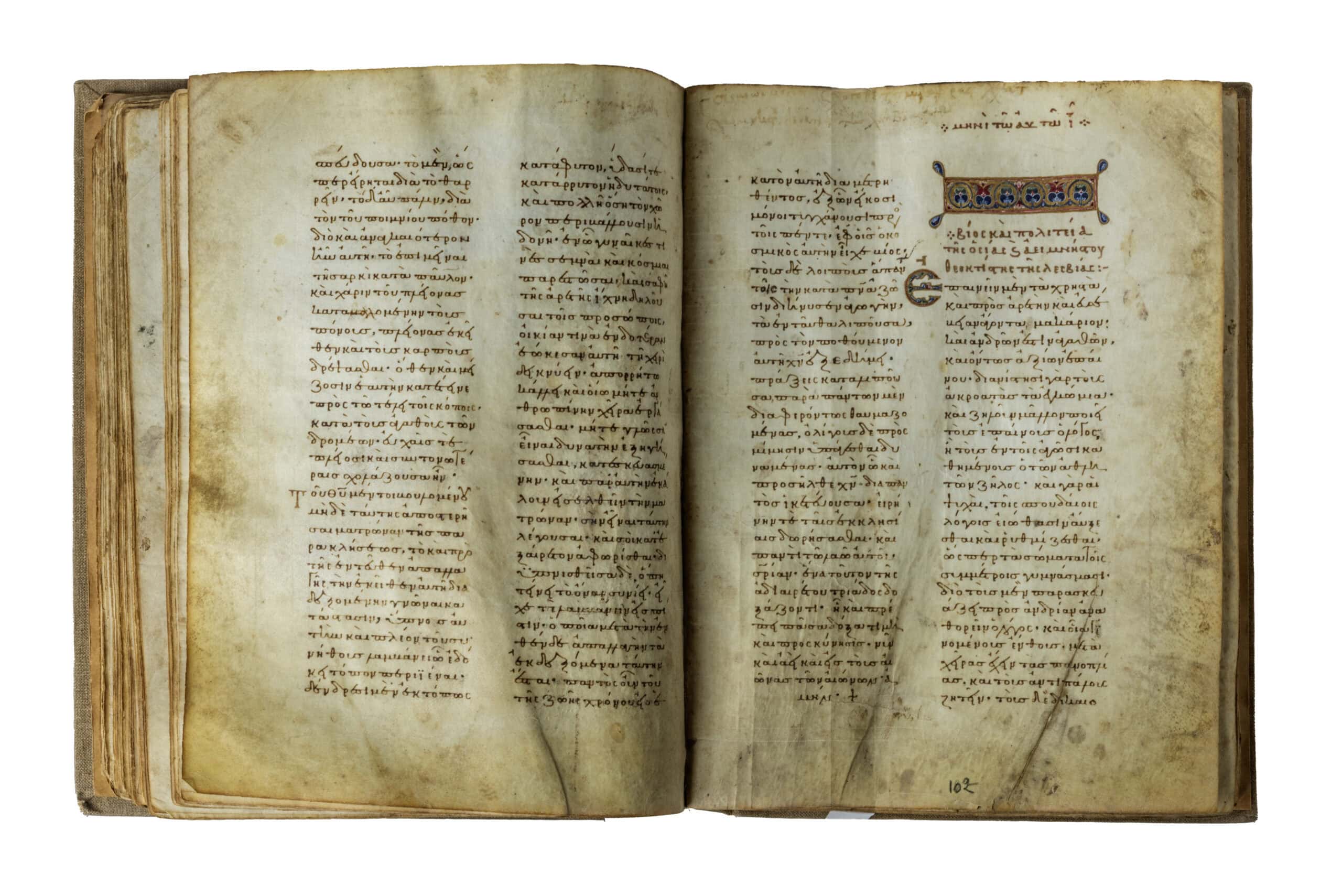The Life of Osia Theoktiste

A codex (book) with parchment sheets presents the Life of Saint Theoktiste, who was violently displaced from her native land and became a woman of the Cyclades dedicating her life to God. Her story was written during the second decade of the 10th century AD by Nicetas magister, a significant scholar and chronicler of his time.
Theoktiste was born in the town of Methymna on Lesbos in the 9th century AD. Following the death of her parents, her relatives delivered her to a monastery where she became a nun. Her life changed dramatically when Arab corsairs abducted her and forced her into slavery. At the pirates’ next stop in Paros, the eighteen-year-old nun managed to escape from her captors. For thirty-five years she chose to live as a recluse in the desolate area of Parikia, in the ruinous church of Panagia Ekatontapyliani, eating only greens, dressed in garments worn by time.
One day, a hunter visited Paros, having arrived from Euboea alongside his companions. As he wished to pray first, he visited the church of Ekatontapyliani, where he encountered an emaciated, eerie female figure. It was Saint Theoktiste, who after she recounted her life story, asked him to bring her a particle of the Holy Communion in his next journey, because she had realized that her life was about to end. Determined to fulfil her desire, the hunter brought her the sacrament which Theoktiste received emotionally charged, giving him her blessing before he engaged in hunting. But when he returned to bid her farewell, she was already dead. Not knowing what to do with her body, he decided to cut off her right hand, without burying her, and take it with him as a relic. Much to their surprise, when he embarked on his journey back home, the hunter and his companions noticed that their ship had not moved at all despite the fair winds. Then he realized that this had been caused by his disrespect with which he had treated the Saint, since he did not honour her properly.
Aiming to rectify his behaviour, he returned the relic to the Saint’s body and then the ship set sailed for its destination. During the journey, the hunter reported to his comrades the events he had experienced. Touched and overwhelmed with awe, they returned to the church to look up for her body. However, it had disappeared having left its mark on the ground, as a reminder of the woman’s holiness. From that point on, different versions emerged on how Theoktiste’s relic travelled from Paros to Ikaria and then to her birthplace Lesbos, or about the island where she was ultimately interred.
The life of Saint Theoktiste of Lesbos was narrated to Nicetas magister by the monk Symeon, who had heard the story by the hunter that had met the Saint. Theoktiste, a female traveller-migrant, who turned into the pride and patron saint of three islands of the Aegean Sea, is annually celebrated by the Church on November 9th.